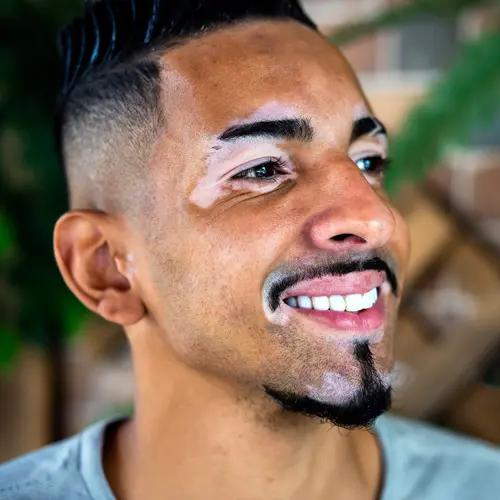Onychorrhexis is a condition where vertical ridges form in your nails. This can be caused by several conditions.
What Is Onychorrhexis?
Onychorrhexis causes ridges and splitting in your nails. Your nails may have several splits that cause triangle tears on the edges.
Onychorrhexis involves the nail matrix, which is responsible for making your nail grow. Problems in making skin cells and a skin protein called keratin can change how your nails grow, leading to onychorrhexis.
Most of the time, onychorrhexis isn’t concerning and is thought to be a cosmetic problem. Sometimes, though, your nails can become brittle and break easily, which can be painful and make it hard to do some activities.
Onychorrhexis can also be a sign of an underlying health problem. Conditions that can cause onychorrhexis include:
- Anemia
- Arteriosclerosis
- Thyroid disease
- Brittle nail syndrome
- Witkop syndrome
- Graft versus host disease
- Systemic amyloidosis
- Rheumatoid arthritis
- Systemic sclerosis
- Osteoarthritis
- Low iron
- Not enough protein
- Not enough folic acid
- Aging
- Eating disorders
- Picking at your nails and other trauma
Your skin and body need the right amount of hormones, nutrients, vitamins, blood, and oxygen in order to function at their best. If these are disrupted, you can have health problems.
Heart and circulatory diseases. Your blood delivers nutrients and oxygen to tissues and cells. If you have problems with your heart, lungs, blood vessels, or oxygen circulation, you might not have enough nutrient delivery. This can affect your nails.
Nutrient deficiencies. If your diet doesn't include enough iron, protein, or folic acid, you can experience problems in how your nails grow. This may be caused by a diet that isn't well balanced or by malnutrition from bulimia or other eating disorders.
Systemic diseases. Hypothyroidism slows down your metabolism. This can cause dry, brittle, and ridged nails. Liver disease and chronic kidney disease can also cause onychorrhexis.
Nail syndromes. Witkop syndrome is a hereditary genetic disease that leads to missing teeth, vertical ridging in fingernails, and toenail koilonychia, which causes indented nails called spoon nails.
Rheumatology diseases. Diseases that affect the joints and cause deformities can cause problems with your nails. Those diseases include gout, rheumatoid arthritis, osteoarthritis, and systemic sclerosis.
Other diseases. Systemic amyloidosis is a rare disease that causes amyloid protein to build up in your organs and tissues. This can affect your nails.
Nail trauma. Injury to your nails, picking at your nails, or strong chemicals can damage your nail matrix, affecting how your nails grow.
Aging. As you get older, your nails can naturally become ridged, dry, brittle, or thick. This is a normal part of the aging process.
Symptoms of Onychorrhexis
The main symptom of onychorrhexis is vertical ridges in your nail. Rather than having a smooth nail, you might have nails with vertical grooves that feel bumpy.
You might have other symptoms that indicate a fungal infection or more serious condition. These signs and symptoms include:
- Yellow nails
- Crumbling nails
- Peeling nails
- Blue nails
- In-grown nails
- Pits in your nails
- Horizontal ridges
- White lines
If you see blood spots under your nails, call your doctor. There could be splinter hemorrhages or pigment changes that go into your cuticle called Hutchinson sign.
Onychorrhexis Treatment
Treatment for onychorrhexis depends on the cause. Your doctor might prescribe medications to treat the underlying condition, such as iron supplements, or adjust your current medications.
Your doctor might also recommend:
- Taking folic acid
- Taking biotin
- Taking a multivitamin
- Taking silicon in the form of choline-stabilized orthosilicic acid
- Specific nail medications
- Applying a formaldehyde varnish
Nail polishes with formaldehyde can dry out your nails and cause more problems, though, so they should be used carefully.
It’s also a good idea to use good hygiene and self-care practices to keep your nails clean and healthy. These include:
- Wearing gloves while you’re using cleaning chemicals or washing the dishes
- Trimming your nails regularly
- Cleaning your nails with a soft brush
- Trimming broken or injured nails
- Using a lotion or oil on your hands, nails, and cuticles
- Trimming nails straight across
- Stopping nail biting and picking
- Applying a urea gel to strengthen your nails
- Avoiding tight shoes
- Use nail polishes with added vitamins and protein
Onychorrhexis isn't generally something to be worried about. Talk to your doctor if you have other health conditions, your nails suddenly change and you don’t know why, or you have other symptoms such as pain or fatigue.

